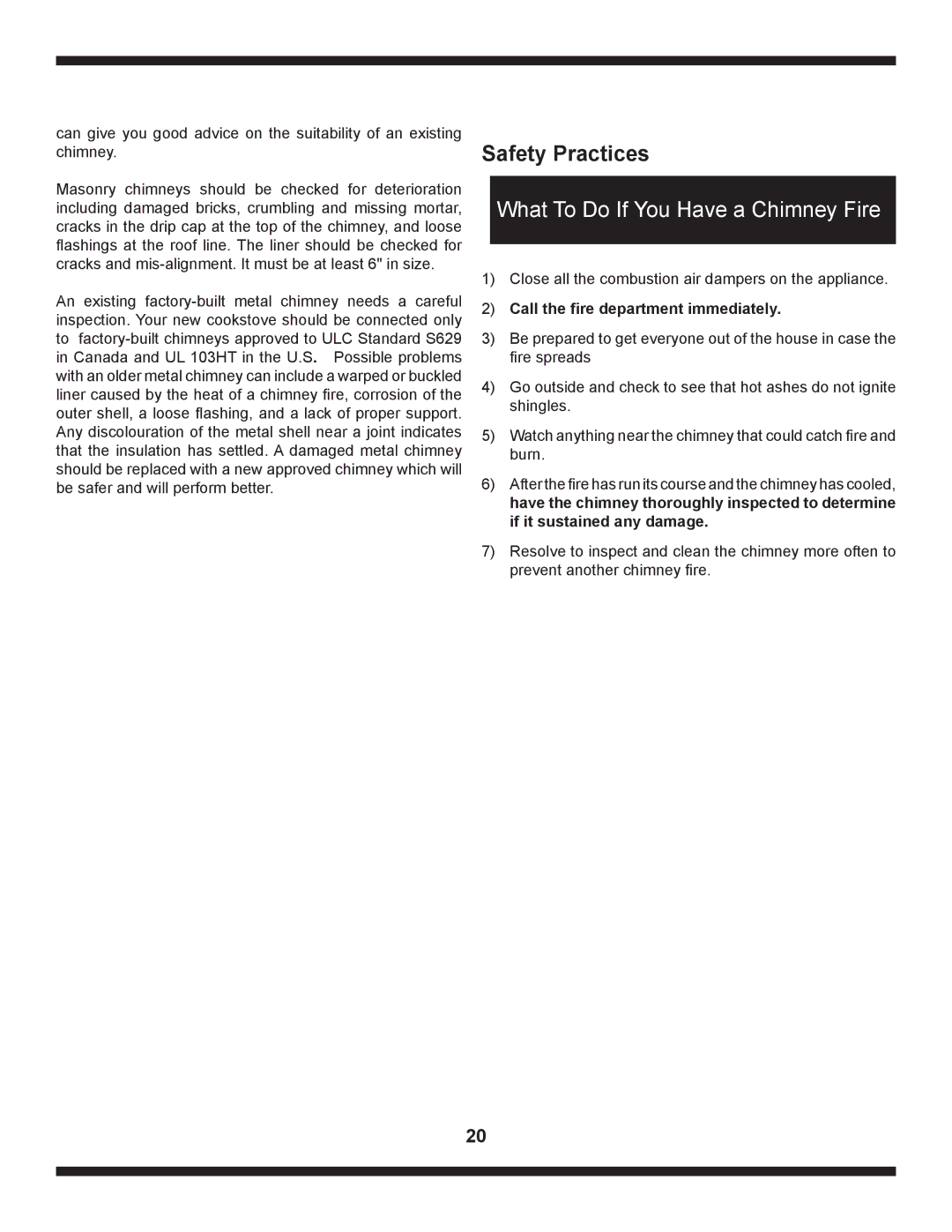
can give you good advice on the suitability of an existing chimney.
Masonry chimneys should be checked for deterioration including damaged bricks, crumbling and missing mortar, cracks in the drip cap at the top of the chimney, and loose flashings at the roof line. The liner should be checked for cracks and
An existing
Safety Practices
What To Do If You Have a Chimney Fire
1)Close all the combustion air dampers on the appliance.
2)Call the fire department immediately.
3)Be prepared to get everyone out of the house in case the fire spreads
4)Go outside and check to see that hot ashes do not ignite shingles.
5)Watch anything near the chimney that could catch fire and burn.
6)After the fire has run its course and the chimney has cooled, have the chimney thoroughly inspected to determine if it sustained any damage.
7)Resolve to inspect and clean the chimney more often to prevent another chimney fire.
20
